A recent fuel octane thread has got me thinking, so I have decided to show the forum what running insufficient fuel octane for the prevailing conditions can do.
I'm sure many folks on here have heard the terms 'Pinking, Detonation or Knock'. Basically, those terms are three ways of expressing the same thing. A good many will know what these terms mean, but for those that don't I thought I would try to share what the phenomena is.
I will use the term detonation (det) for the purposes of this piece. So what is det? It is the auto-ignition of end gasses ahead of an advancing flame front. As an analogy, imagine if you will a balloon being inflated within a bottle, with the contents of the balloon containing the Air/Fuel mixture being ignited. The Air/Fuel mixture is also present outside of the balloon but is being pressurised and heated by the advancing flame-front (the balloon). The pressure being exerted within the cylinder is being applied to the piston crown, along with the cylinder head, gasket and cylinder walls and crucially, the unburnt portion of gaseous mixture. If the pressure and temperature ahead of the flame-front rise high enough, the mixture can spontaneously ignite in an uncontrolled manner. The instantaneous pressure and temperature resulting can cause severe damage to engine components. Localised intense heat can melt aluminium components, picking out pieces of the material from piston crowns and cylinder heads. I have posted some pictures of an engine, which was pretty much ruined by this destructive condition.
So what is the 'knocking' sound that is audible from time to time? There has been some good research done in this area, suggesting that the sound we hear when detonation occurs is actually a sonic boom being transmitted through the engine structure.
Some may find it surprising that detonation manifests itself on the colder side of the chamber. It always occurs away from the spark plug area, particularly if there are any nooks and crannies for mixture to hide in, as the photos will show. The reason it takes place on the cold side (intake side)? The flame front advances towards the hottest parts of the chamber first, as it takes less energy to ignite the mixture contained in this area, hence delaying the combustion on the colder side, leaving it vulnerable to the increasing pressure heading it's way.
There can be many single causes, such as over advanced ignition timing, a leaner than optimum Air/Fuel ratio, too high a compression ratio, too low an octane rating fuel, or too high a combustion chamber temperature. Combining two or more of those, particularly in turbocharged engines, can be catastrophic. Most, if not all modern engines, have closed-loop sensors that can detect the onset of detonation and trim the ignition back to safe levels on a cylinder by cylinder basis. Bear in mind here that the problem has already occurred and that the sensors are reacting after the fact! This is why on a high performance engine that the manufacturer states 'use 98 RON or higher', it is always a good idea to do so.
There has also been discussion as to which octane number is the most relevant, Motor or Research. Both are arrived at by testing in a CFR engine and compared to a fuel of known detonation resistance (n-heptane if memory serves me well). The research number (again from memory) is arrived at by testing at 600 rpm with an induction charge temperature of 150 degrees Fahrenheit, whereas the motor value is derived from the same variable compression ratio engine running at 900 rpm and an induction charge temperature of 300 degrees Fahrenheit. Personally, I believe the US system of R+M/2 is the best way to categorise the octane rating. A little light reading on the subject can be found in a book entitled 'The Internal Combustion Engine In Theory and Practice' by Charles Fayette-Taylor.
I recently spoke to a chap who does the engine testing at a large fuel company, who backed up what 'Cheburetor ' said about base fuels and additives. He said raising the Research octane number was a damned sight easier than gaining one point of Motor octane. He also confirmed that the company he works for state the minimum octane rating found when sampling all of their fuels, rather than the maximum. He believed that was not the case for all fuel companies.....Food for thought.
So, some photographs for you. Picture one is cylinder one and so on until we reach the very damaged cylinders five and six. This head has come to us for repair, the client suspects low octane fuel was mistakenly put in the race car during a long race.
Cylinder 1 Note the sandblasted appearance at between 7 and 8 O'clock both around the valve seat and on the chamber face.
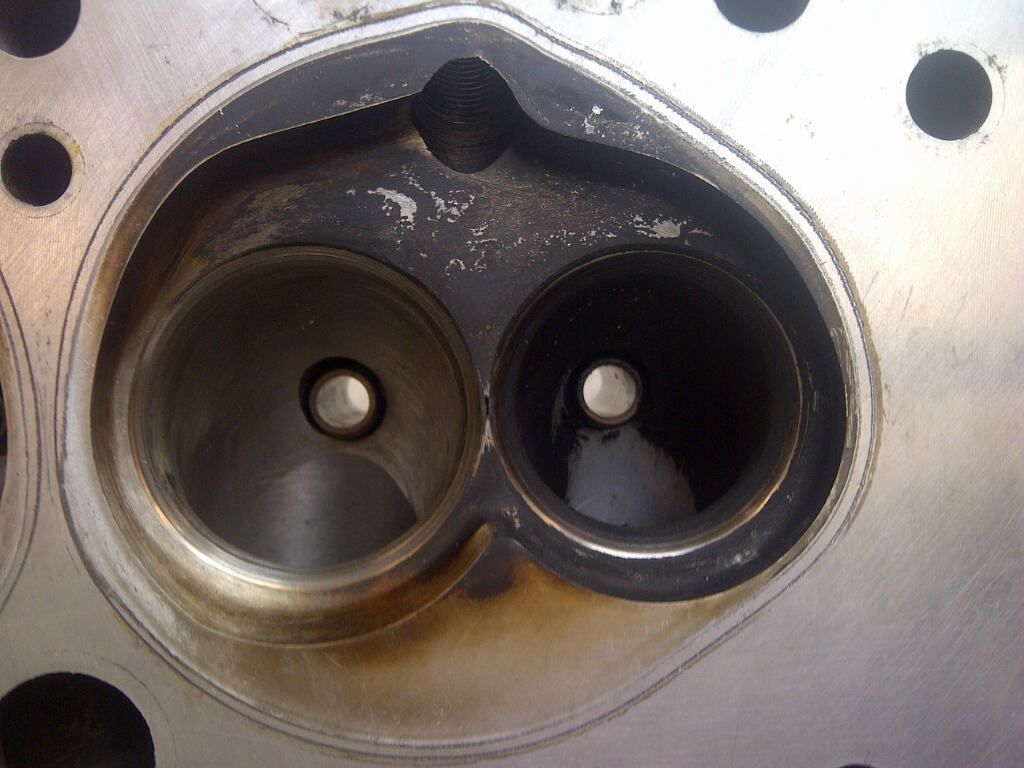
Cylinder 2 is still healthy, possibly as a result of the exhaust scavenging characteristics of this particular engine
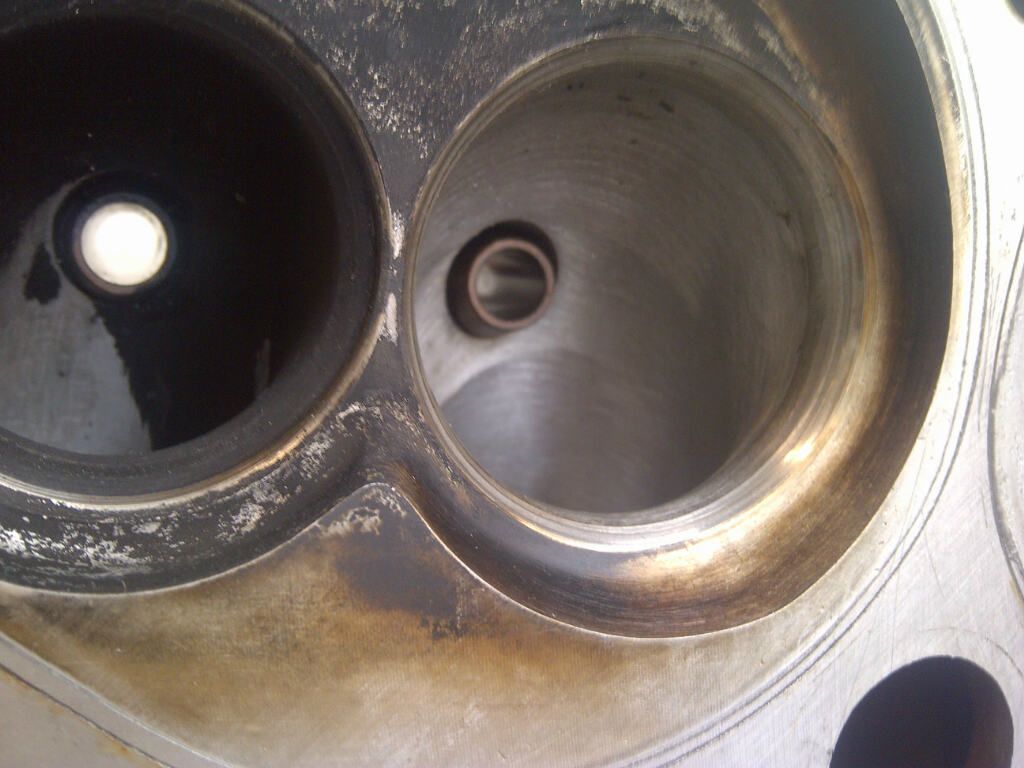
Cylinder 3, things are starting to deteriorate rapidly. Heavy detonation has started to erode the cylinder head (and piston crown) at around 7 O'clock to 9 O' clock in the photograph
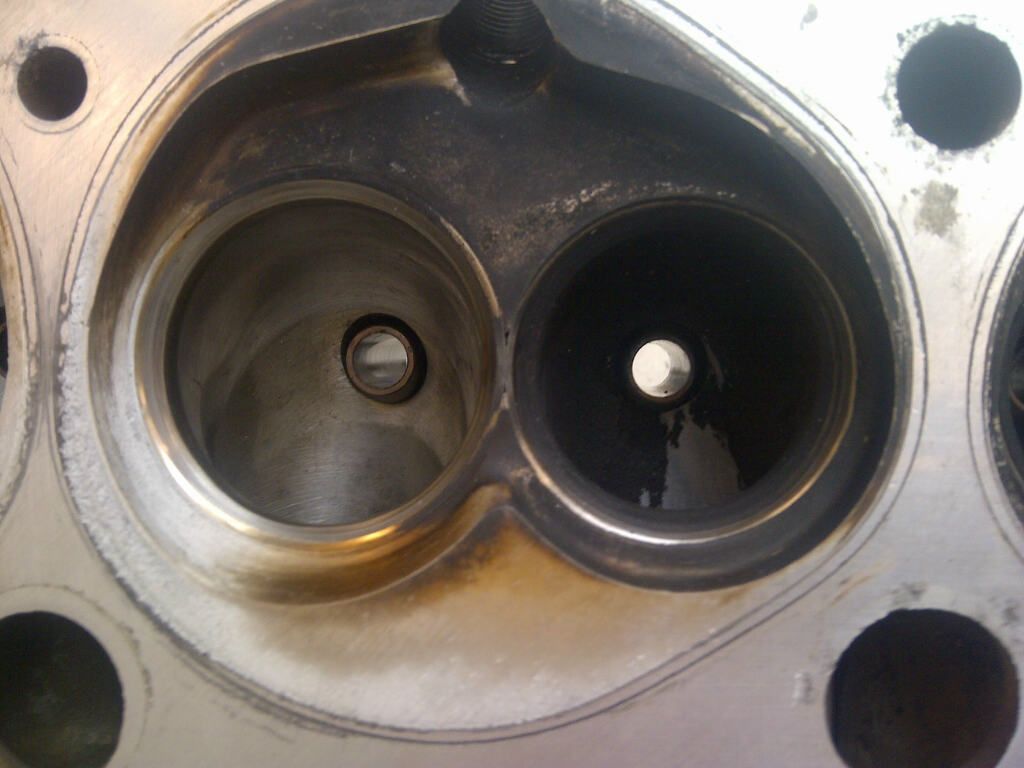
A close up of cylinder 3 showing the same damage in more detail.
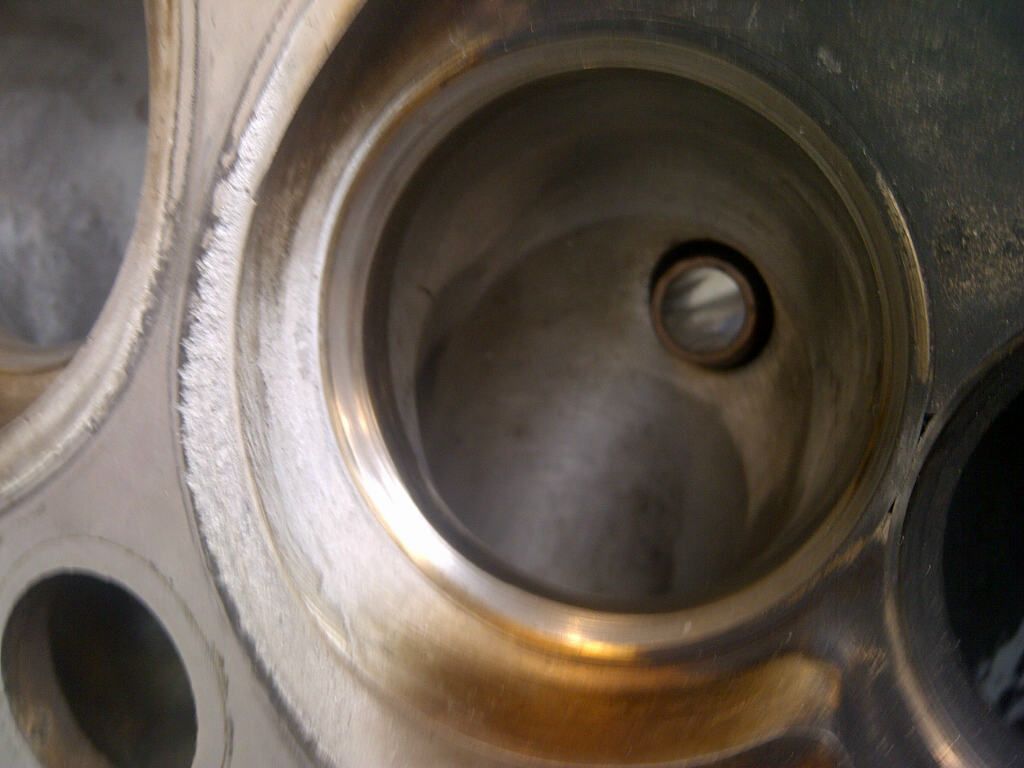
Cylinder 5 showing the heavy removal of material, again, furthest away from the spark plug and in a cooler area of the combustion chamber.

Cylinder 6 shows total destruction and melting of the head. It is probable that due to the constant spiking of cylinder pressure due to detonation, the head gasket gave up the ghost and allowed some water in.
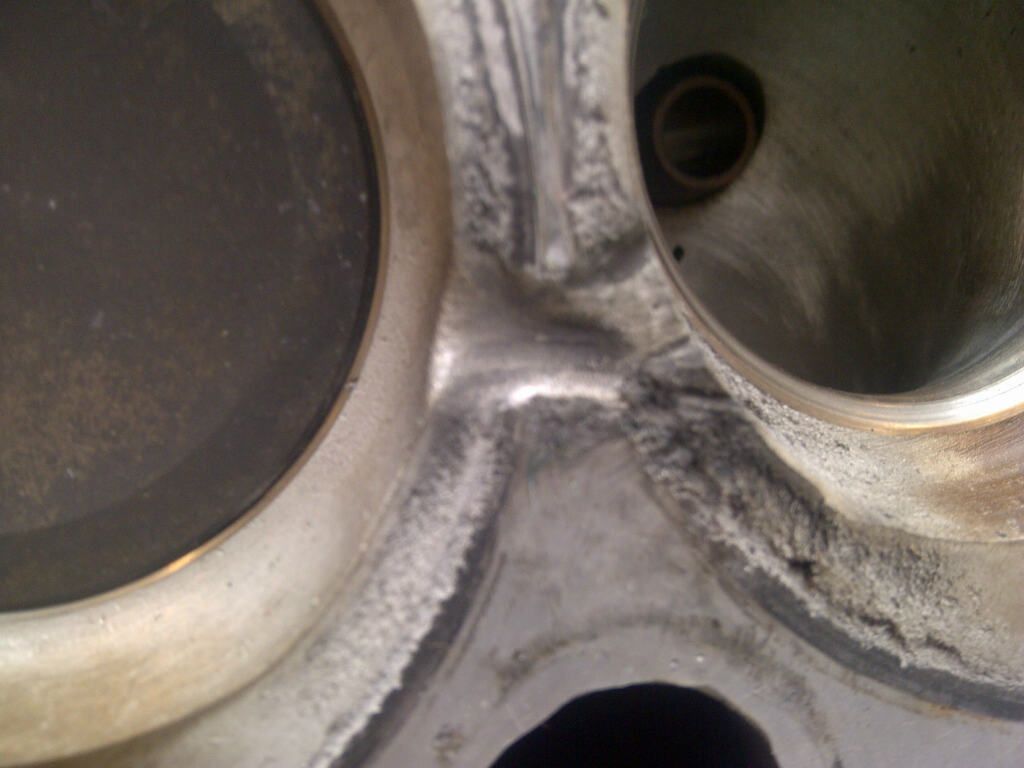
As you can see, detonation can be very destructive. Which is why I will always use the best fuel possible for any high performance engine, unless the manufacturer states otherwise.
As a footnote, I hope this little lot is received in the manner in which it was intended; that being to inform rather than preach so to speak.
It would also appear that Photobucket won't directly show the photographs in the post? I hope you guys are able to see them, or all this lot will have been in vain!!
Mike.
I'm sure many folks on here have heard the terms 'Pinking, Detonation or Knock'. Basically, those terms are three ways of expressing the same thing. A good many will know what these terms mean, but for those that don't I thought I would try to share what the phenomena is.
I will use the term detonation (det) for the purposes of this piece. So what is det? It is the auto-ignition of end gasses ahead of an advancing flame front. As an analogy, imagine if you will a balloon being inflated within a bottle, with the contents of the balloon containing the Air/Fuel mixture being ignited. The Air/Fuel mixture is also present outside of the balloon but is being pressurised and heated by the advancing flame-front (the balloon). The pressure being exerted within the cylinder is being applied to the piston crown, along with the cylinder head, gasket and cylinder walls and crucially, the unburnt portion of gaseous mixture. If the pressure and temperature ahead of the flame-front rise high enough, the mixture can spontaneously ignite in an uncontrolled manner. The instantaneous pressure and temperature resulting can cause severe damage to engine components. Localised intense heat can melt aluminium components, picking out pieces of the material from piston crowns and cylinder heads. I have posted some pictures of an engine, which was pretty much ruined by this destructive condition.
So what is the 'knocking' sound that is audible from time to time? There has been some good research done in this area, suggesting that the sound we hear when detonation occurs is actually a sonic boom being transmitted through the engine structure.
Some may find it surprising that detonation manifests itself on the colder side of the chamber. It always occurs away from the spark plug area, particularly if there are any nooks and crannies for mixture to hide in, as the photos will show. The reason it takes place on the cold side (intake side)? The flame front advances towards the hottest parts of the chamber first, as it takes less energy to ignite the mixture contained in this area, hence delaying the combustion on the colder side, leaving it vulnerable to the increasing pressure heading it's way.
There can be many single causes, such as over advanced ignition timing, a leaner than optimum Air/Fuel ratio, too high a compression ratio, too low an octane rating fuel, or too high a combustion chamber temperature. Combining two or more of those, particularly in turbocharged engines, can be catastrophic. Most, if not all modern engines, have closed-loop sensors that can detect the onset of detonation and trim the ignition back to safe levels on a cylinder by cylinder basis. Bear in mind here that the problem has already occurred and that the sensors are reacting after the fact! This is why on a high performance engine that the manufacturer states 'use 98 RON or higher', it is always a good idea to do so.
There has also been discussion as to which octane number is the most relevant, Motor or Research. Both are arrived at by testing in a CFR engine and compared to a fuel of known detonation resistance (n-heptane if memory serves me well). The research number (again from memory) is arrived at by testing at 600 rpm with an induction charge temperature of 150 degrees Fahrenheit, whereas the motor value is derived from the same variable compression ratio engine running at 900 rpm and an induction charge temperature of 300 degrees Fahrenheit. Personally, I believe the US system of R+M/2 is the best way to categorise the octane rating. A little light reading on the subject can be found in a book entitled 'The Internal Combustion Engine In Theory and Practice' by Charles Fayette-Taylor.
I recently spoke to a chap who does the engine testing at a large fuel company, who backed up what 'Cheburetor ' said about base fuels and additives. He said raising the Research octane number was a damned sight easier than gaining one point of Motor octane. He also confirmed that the company he works for state the minimum octane rating found when sampling all of their fuels, rather than the maximum. He believed that was not the case for all fuel companies.....Food for thought.
So, some photographs for you. Picture one is cylinder one and so on until we reach the very damaged cylinders five and six. This head has come to us for repair, the client suspects low octane fuel was mistakenly put in the race car during a long race.
Cylinder 1 Note the sandblasted appearance at between 7 and 8 O'clock both around the valve seat and on the chamber face.

Cylinder 2 is still healthy, possibly as a result of the exhaust scavenging characteristics of this particular engine

Cylinder 3, things are starting to deteriorate rapidly. Heavy detonation has started to erode the cylinder head (and piston crown) at around 7 O'clock to 9 O' clock in the photograph

A close up of cylinder 3 showing the same damage in more detail.

Cylinder 5 showing the heavy removal of material, again, furthest away from the spark plug and in a cooler area of the combustion chamber.

Cylinder 6 shows total destruction and melting of the head. It is probable that due to the constant spiking of cylinder pressure due to detonation, the head gasket gave up the ghost and allowed some water in.

As you can see, detonation can be very destructive. Which is why I will always use the best fuel possible for any high performance engine, unless the manufacturer states otherwise.
As a footnote, I hope this little lot is received in the manner in which it was intended; that being to inform rather than preach so to speak.
It would also appear that Photobucket won't directly show the photographs in the post? I hope you guys are able to see them, or all this lot will have been in vain!!
Mike.


































